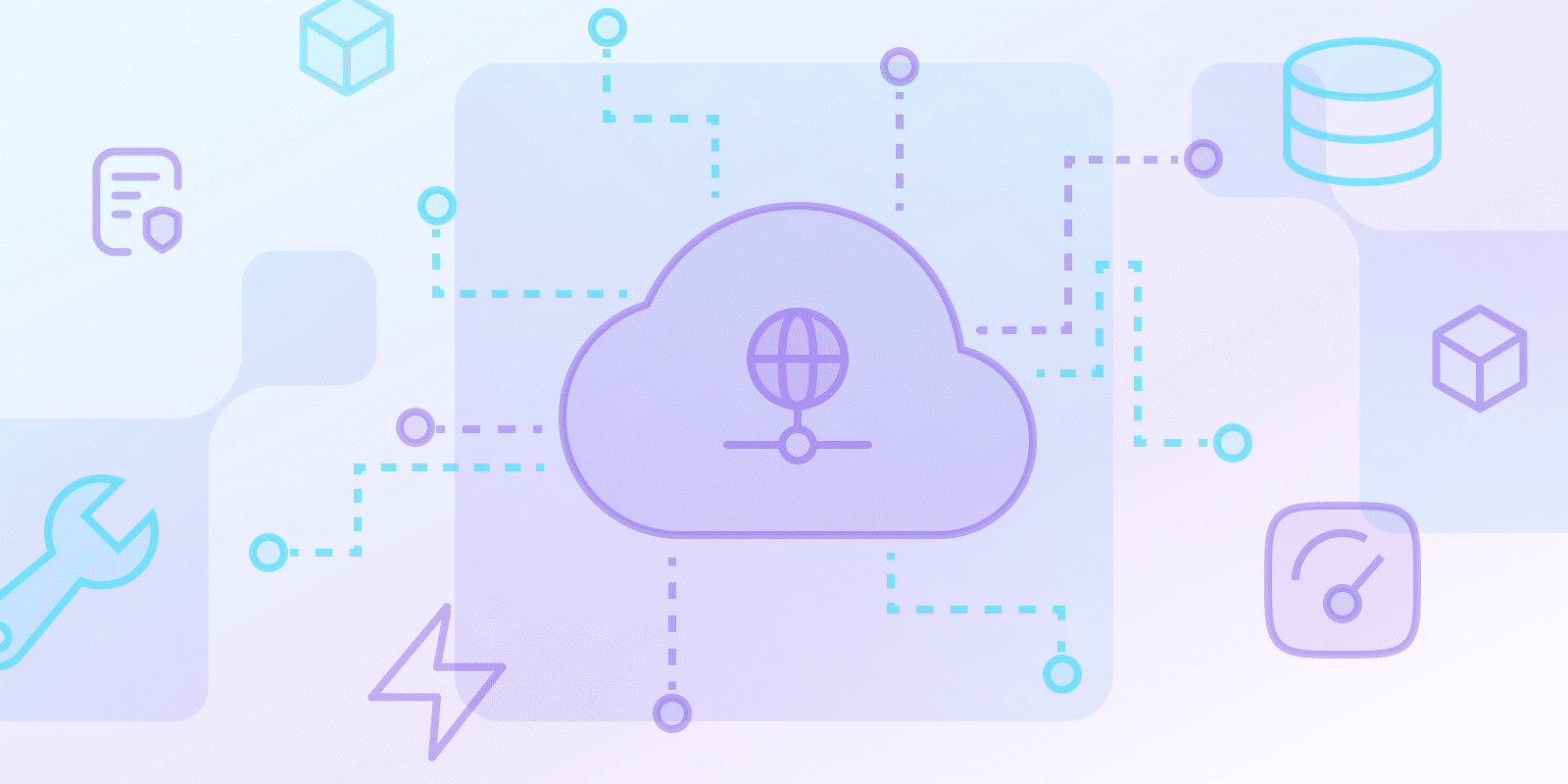Desenvolvimento nativo da nuvem
O que são bancos de dados nativos da nuvem?

O que são bancos de dados nativos da nuvem?
Os bancos de dados nativos da nuvem são criados especificamente para ambientes de nuvem, utilizando a escalabilidade, elasticidade e arquitetura distribuída da infraestrutura de nuvem.
Eles são construídos do zero para prosperar na nuvem, ao contrário dos bancos de dados convencionais, que foram projetados para ambientes locais e muitas vezes lutam para se adaptar à natureza ativa da nuvem.
- Alta escalabilidade, disponibilidade e eficiência de custos são considerações fundamentais para a satisfação do cliente.
- Alguns produtos famosos nesta categoria são Amazon DynamoDB, Google Cloud Spanner e MongoDB Atlas.
- Bancos de dados nativos da nuvem devem ser usados quando seus aplicativos exigem alta escalabilidade, você lida com grandes quantidades de dados ou deseja minimizar os custos operacionais.
Qual é a diferença entre um banco de dados nativo da nuvem e um banco de dados tradicional?
A principal diferença se baseia em escala, arquitetura e nas abordagens usadas para obter disponibilidade. Os bancos de dados nativos da nuvem são projetados para adicionar nós horizontalmente para obter alta disponibilidade e desempenho na nuvem. Os bancos de dados tradicionais, por outro lado, são normalmente planejados para escalonamento vertical e podem ter dificuldades para se ajustar à natureza ativa da nuvem.
O armazenamento de dados nativo da nuvem pode integrar atributos como uma arquitetura distribuída, serviços gerenciados e preços de pagamento conforme o uso, o que pode contribuir para sua compatibilidade com certos aplicativos modernos baseados em nuvem.
| Característica | Bancos de Dados Nativos da Nuvem | Bancos de Dados Tradicionais |
|---|---|---|
| Arquitetura e Dimensionamento | ||
| Abordagem de Escalonamento | Dimensionamento horizontal (adicionando nós) | Dimensionamento vertical (atualização de hardware) |
| Tipo de Arquitetura | Arquitetura distribuída | Arquitetura centralizada |
| Características operacionais | ||
| Design de ambiente | Criado especificamente para ambientes em nuvem | Projetado para implantação local |
| modelo de preços | Pagamento conforme o uso | Licenciamento tradicional |
| Gerenciamento | Serviços gerenciados disponíveis | Configuração manual necessária |
| Desempenho e disponibilidade | ||
| Disponibilidade | Alta disponibilidade por design | Requer configuração adicional |
| Adaptabilidade | Resposta dinâmica às condições de carga | Alocação fixa de recursos |
| Integração em nuvem | Integração nativa com serviços em nuvem | Compatibilidade limitada com a nuvem |
Quais são os principais benefícios de usar bancos de dados nativos da nuvem?
Escalabilidade fácil, alta disponibilidade, baixos custos e sobrecarga funcional mínima são alguns dos benefícios percebidos dos produtos nesta categoria. Os bancos de dados nativos da nuvem podem aumentar ou diminuir rapidamente em resposta às condições de carga, o que significa que raramente há necessidade de os bancos de dados ficarem offline.
Os serviços de pagamento conforme o uso oferecem pagamento flexível com base no uso, enquanto os serviços totalmente gerenciados podem ajudar a reduzir a necessidade de configuração e manutenção manuais.
Quais desafios ou considerações as organizações devem estar cientes ao adotar bancos de dados nativos da nuvem?
Problemas emergentes que operam problemas-chave estão inter-relacionados e incluem bloqueio de fornecedor, migração de dados e habilidades para implantar e gerenciar esses bancos de dados.
É crucial considerar quão fácil é mover os dados caso surjam possíveis dificuldades na migração de dados e ter uma ideia clara da experiência de gerenciamento de banco de dados ou da possibilidade de abordar serviços gerenciados.
Quais são alguns exemplos do mundo real de bancos de dados nativos da nuvem em ação?
Exemplos notáveis incluem:
- Amazon DynamoDB: Um banco de dados NoSQL é frequentemente usado para aplicações de alto desempenho que requerem flexibilidade na modelagem de dados.
- Google Cloud Spanner: Ele aproveita uma arquitetura distribuída em vários locais em seu banco de dados relacional, visando atingir simultaneamente a consistência de dados e a disponibilidade do serviço.
- MongoDB Atlas: Um banco de dados orientado a documentos projetado para flexibilidade e escalabilidade, normalmente usado em ambientes baseados em nuvem.
- Azure Cosmos DB: Este é um tipo de banco de dados que é hospedado na nuvem e pode trabalhar com diferentes modelos de dados e protocolos.
Os casos de utilização da indústria envolvem plataformas de comércio eletrônico, aplicativos de jogos e dispositivos IoT.
Quando as organizações devem considerar o uso de um banco de dados nativo da nuvem em vez de uma solução tradicional ou SaaS?
Use bancos de dados nativos da nuvem quando seus aplicativos precisam ser altamente escaláveis e disponíveis quando você processará uma grande quantidade de dados, quando quiser gastar o mínimo de tempo em operações ou ao criar novos aplicativos nativos da nuvem.
Nativo da nuvem bancos de dados são projetados para o ambiente de nuvem. Embora possam oferecer vantagens sobre os tradicionais ou Soluções SaaS em relação à escalabilidade, flexibilidade e economia de custos, esses benefícios podem não ser totalmente percebidos a longo prazo.
Se as suas necessidades são relativamente básicas e as suas exigências podem ser facilmente previstas, então uma solução SaaS seria o melhor ponto de partida. No entanto, quando a sua aplicação se torna mais complicada e a sua empresa precisa de mais independência e personalização, uma base de dados nativa da nuvem pode ser a melhor solução.
Conclusão
Os bancos de dados nativos da nuvem estão modificando o imperativo de criar e implantar aplicativos. Esses serviços são caracterizados por escalabilidade, disponibilidade e custo-benefício, que são considerações importantes para empresas modernas. Se você se deparar com a necessidade de considerar opções para trabalho adicional com o banco de dados, você deve pensar sobre todos os requisitos e peculiaridades descritas neste artigo e decidir se o uso do banco de dados nativo da nuvem seria uma boa ideia no seu caso.